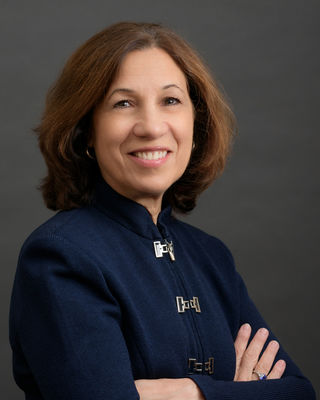Trauma
Shared Trauma During a Pandemic
What happens when the patient and therapist both experience the same trauma?
Posted April 6, 2020 Reviewed by Jessica Schrader

“What do you think about this coronavirus pandemic?” my patient asks as he starts our therapeutic hour, settling into his seat in my office.
“What do you think and feel?” I ask in reply.
I sit quietly and listen as he shares his experiences and reflections about navigating his new reality in the time of COVID, yet privately reflect upon how we are both living through this pandemic: We both fear for our health and that of our loved ones, we both need to shelter in place and have experienced disruptions to our personal and work lives. While therapists often focus on understanding each patient’s personal experiences, what happens when the patient and therapist are living through the same traumatic event?
To better understand this phenomenon, I reached out to Professor Carol Tosone of New York University’s Silver School of Social Work. Tosone has done extensive research on the experience of what she has termed a “shared trauma,” or when the patient and therapist simultaneously share the same collective trauma. The therapist may be navigating his or her own fears and losses similar to that of the patient, but at work, the clinician is there to help the patient process his or her own trauma of this shared experience.
Her interest in this topic was sparked on September 11, 2001, when Tosone was in the middle of a session with a patient a mile away from Ground Zero. While sitting with her patient, she heard the noise of the airplanes flying low, the crash of the towers, and the sirens of the first responders. In the aftermath of the crisis, Tosone also navigated her own trauma alongside her students at NYU and patients in downtown Manhattan, some of whom worked in or near the Twin Towers.
Interested to learn more, Tosone has since researched the shared trauma of hundreds of clinicians: those living and working in Manhattan during September 11; practicing in the aftermath of Hurricane Katrina in New Orleans; and those dealing with the long-term impact of the Troubles in Northern Ireland. Tosone has also served as a consultant to clinicians and organizations following Hurricane Sandy in New York and earthquake activity in Southern California. Internationally, she has provided consultation to professionals in Sderot, Israel, who often live under the constant fire of rockets shot from the Gaza strip a few miles away, as well as mental health professionals in Afghanistan under threat of terrorism and Indonesian psychologists exposed to frequent volcanic eruptions. Yet Tosone acknowledges that the previous events she has examined were discreet and specific events, whereas during the Coronavirus pandemic the public is uncertain as to when it will end and what the future holds.
Tosone’s research has found that while some clinicians are too anxious or overwhelmed to care for their patients during or after a crisis, other mental health professionals “feel better doing the work, as it connects them with the sense of larger meaning and purpose. It makes you feel like you have impact, a sense of agency.”
The experience of navigating a trauma together can also serve to deepen the intimacy between therapist and patient, as they can acknowledge being in the crisis together. Tosone shared the example of a clinician who was in the middle of a session when an earthquake hit and panicked. The patient calmly guided her to a doorway, calming the psychologist in the middle of the session. The therapist’s reaction to the earthquake had to be later processed in session, resulting in discussions about the patient’s early experiences as a parentified child. However, the patient also noticed the power of witnessing the therapist’s vulnerability and fallibility.
Tosone does caution that therapists should reflect carefully on what they choose to share in session, so as to not overburden or switch roles with the patient. Additionally, witnessing the therapist’s vulnerability might also prove challenging, as this can result in the patient needing to explore their fantasy or illusion of the therapist as a blank slate. Finally, should the crisis happen while the patient is in the middle of the session — for example, the rocket hits the building next door _ this can lead to the patient feeling anxious about attending therapy in what had previously been a safe space. Tosone gave the example of the patient she was seeing on 9/11 had previously been punctual for each session, but after hearing the Towers crash during his therapy, he started coming late or canceling his sessions.
Based on her research, Tosone has advice for clinicians in the time of this unprecedented global pandemic. First, she urges clinicians to stay connected and create virtual groups with their colleagues. It is important to find ways to connect with others, even if it is virtual. This period helps us recognize our need for intimacy, even in this period where we have moved towards living life online. Second, “practice what you preach” regarding self-care. For instance, if you are encouraging mindfulness, do this for yourself as well. Third, aim to promote resilience in your own life, and model this for your clients. As a therapist, it is important to work from a strength-based perspective to help patients make changes in their own lives. Fourth, work to adapt to the new normal. A helpful strategy during this time can be to limit media exposure. Finally, approach this pandemic as a positive opportunity for reflection on our own lives. This can be a positive time to reassess our own goals, wants, and needs going forward.
Shared trauma, Tosone reminds me, does not mean that the therapist’s response will be the same as the patient, as there can be variability in how the clinicians and clients are impacted by the same experience. I have certainly noted a variation of response in my own practice—what bothers my patients about the pandemic and its repercussions is often not what frightens me. Our session draws to a close, and my patient turns to exit, first by adjusting his face mask and plastic gloves. Little does he know when I leave my office in a few minutes, I will do the same. I find myself agreeing with Tosone’s sentiment, that the “shared trauma reminds us of our shared humanity, that we are all in the same boat.”
References
Tosone, C. (2011). The legacy of September 11: Shared trauma, therapeutic intimacy, and professional posttraumatic growth. Traumatology, 17(3), 25–29. https://doi.org/10.1177/1534765611421963
Tosone, C., McTighe, J.P., Bauwens, J., Naturale, A.J. (2011). Shared traumatic stress and the long-term impact of 9/11 on Manhattan clinicians. Traumatic Stress, 24(5):546-52. doi: 10.1002/jts.20686.
Tosone, C., Nuttman-Shwartz, O. & Stephens, T. (2012). Shared trauma: When the professional is personal. Clin Soc Work Journal, 40, 231–239. https://doi.org/10.1007/s10615-012-0395-0


